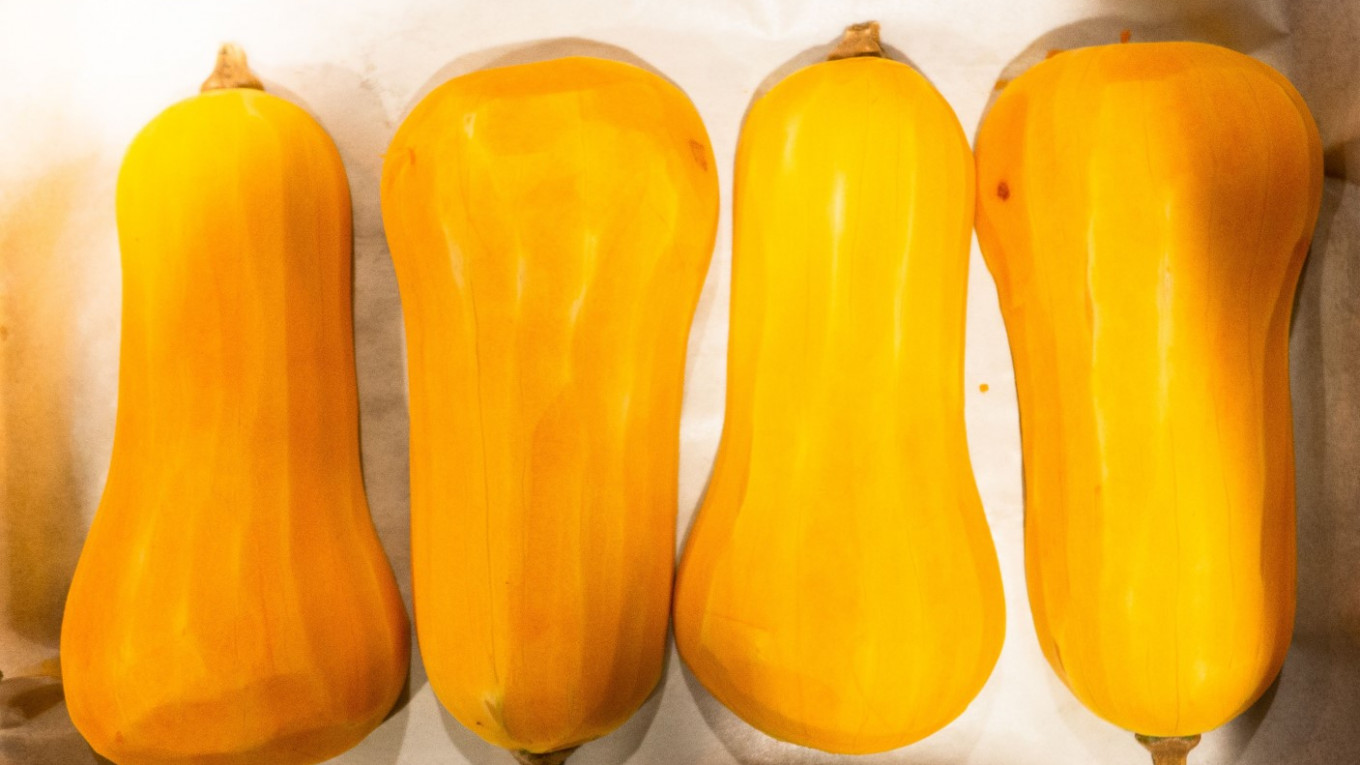Is it just me, or is there a distinct lack of urgency about Russia’s latest lockdown, or “non-working week,” as the authorities are billing it? The worrying rise in COVID cases suggests that a week (at least) is well warranted, but there is something about this time around that feels more like the frantic run up to a long Russian holiday week before everything shuts down, nothing gets done, and everyone starts day drinking. Like any pre-holiday period, Russia has experienced a mass exodus to Turkey and Egypt by those who prefer to do their day drinking on the beach.
As a keen historian of the sprawling landscape of Russian public holidays, I could not help but notice that the “non-working week” had been conveniently wrapped around November 4th or “Day of Unity and Accord.” This new holiday was repurposed from the iconic November 7th or Revolution Day, once the reddest of all red days on the calendar, and enjoys proximity to Halloween, which may be why Moscow’s nightclubs and bars were going full throttle the night before lockdown begun.
“It’s a sin to complain,” as the Russians say, so I am embracing the “non-working week” with gratitude, coupled with the fervent hope that it will do the trick and stem precipitous rise in COVID-19 cases. And a week’s respite from the usual hurly-burly of the Russian capital is a great excuse for some leisurely experimentation in the kitchen.
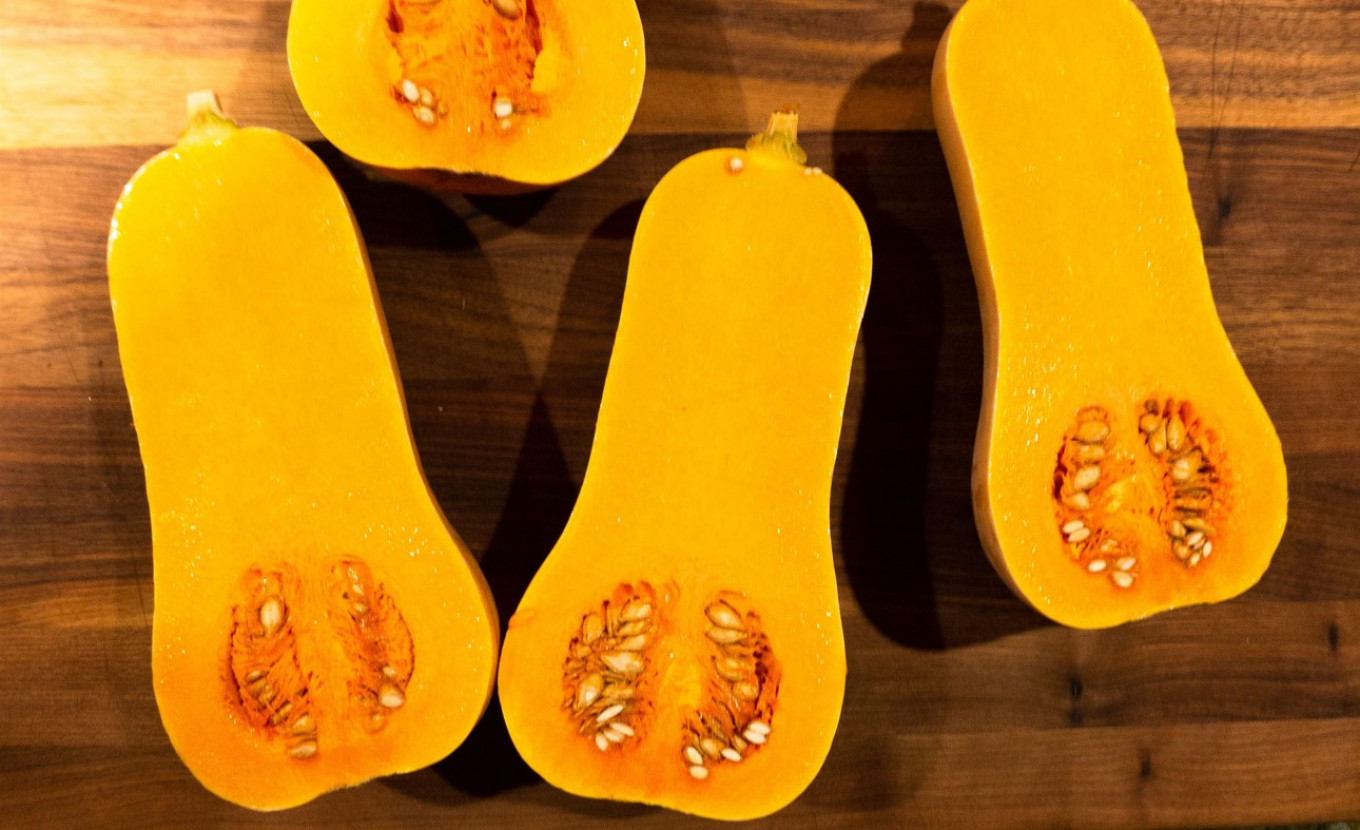
By now, the quarantine cuisine drill should be second nature: I assume that you’ve hoarded 10 kilos of grechka, those indispensable buckwheat groats which for centuries have been the bulwark between Russians and famine. Your pantry probably still boasts neat stacks of tinned beans because you still haven’t figured out what to do with them, and presumably, you’ve laid in a good supply of hardy root vegetables, which should last far beyond November 7 when lockdown is set to lift.
I have a lot of butternut squash in my kitchen at the moment, which is less a nod to lockdown and more a hallmark of the season: they are ubiquitous this time of year, overflowing in bins at the market and front and center in food magazines and TikTok videos, which urge us to incorporate these relentlessly cheerful gourds into pasta dishes, dumplings, soups, stews, pilafs, and even cakes.
With time on my hands, four butternut squash cluttering up my counter, a big bunch of sage ready to harvest in my garden, and Halloween on the horizon, I decided to tackle hasselback butternut squash. Butternut squash’s graceful, curved silhouette and vibrant orange color look spectacular when presented with thin layers fanned out — a dish festive enough to bring to the holiday table as a side dish or the main event for vegetarians.
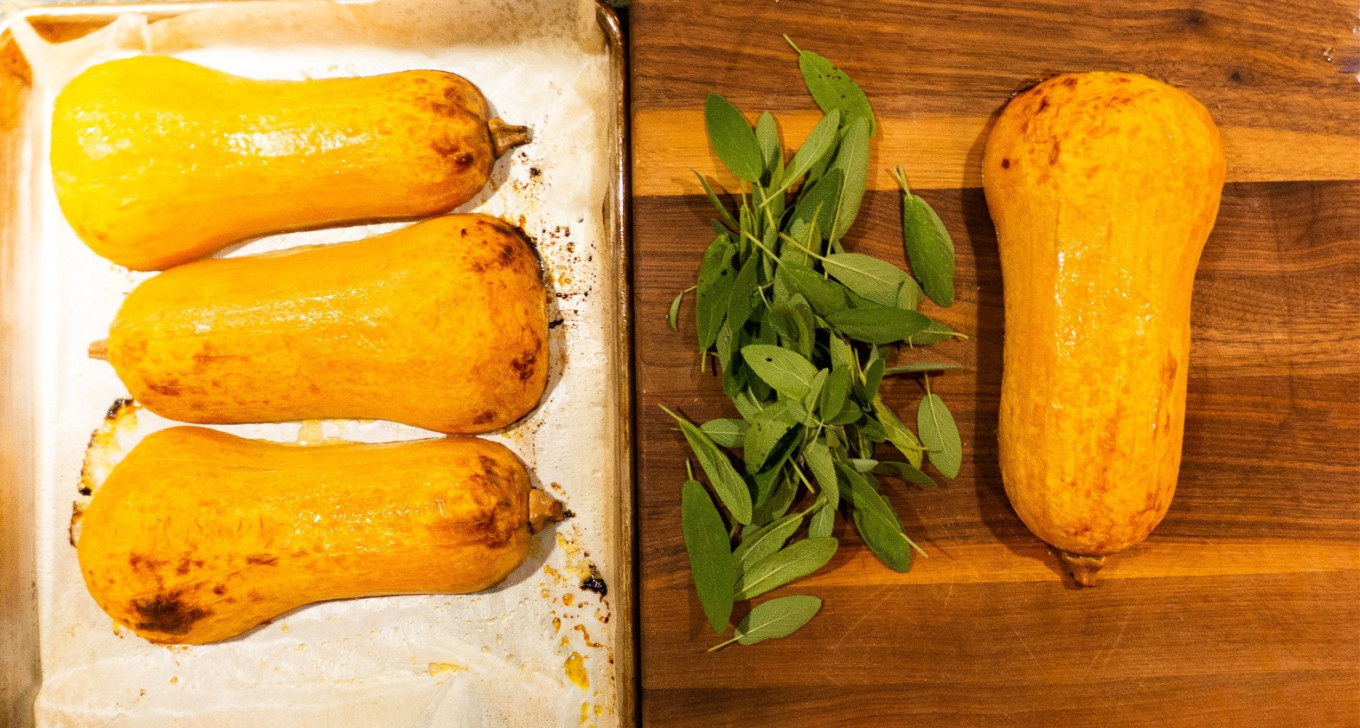
I’ve written before about the magic of hasselback-ing, a Swedish technique of slicing food in thin layers then roasting it, be it ham, potato, or butternut squash. The method allows for a shorter cooking time thanks to a vastly increased surface directly exposed to the heat source. Hasselback vegetables have a crispier and I feel a far more interesting texture, and the multiple layers create a lot of interesting opportunities to introduce additional flavor notes.
Butternut squash has a robust flavor — it’s far more vibrant than its cousin, the pumpkin — but it becomes something very special when combined with other flavors. The version of hasselback butternut squash I’ve developed in the recipe below is stuffed with sage leaves and then glazed with a balsamic vinegar, honey, and red pepper syrup and sprinkled with sumac. Scattering tiny cubes of rendered salo or pancetta around the plated squash gives this dish an unexpected but delightfully salty note, and vegetarians should feel free to substitute salty goat cheese or nuts to achieve the same effect.
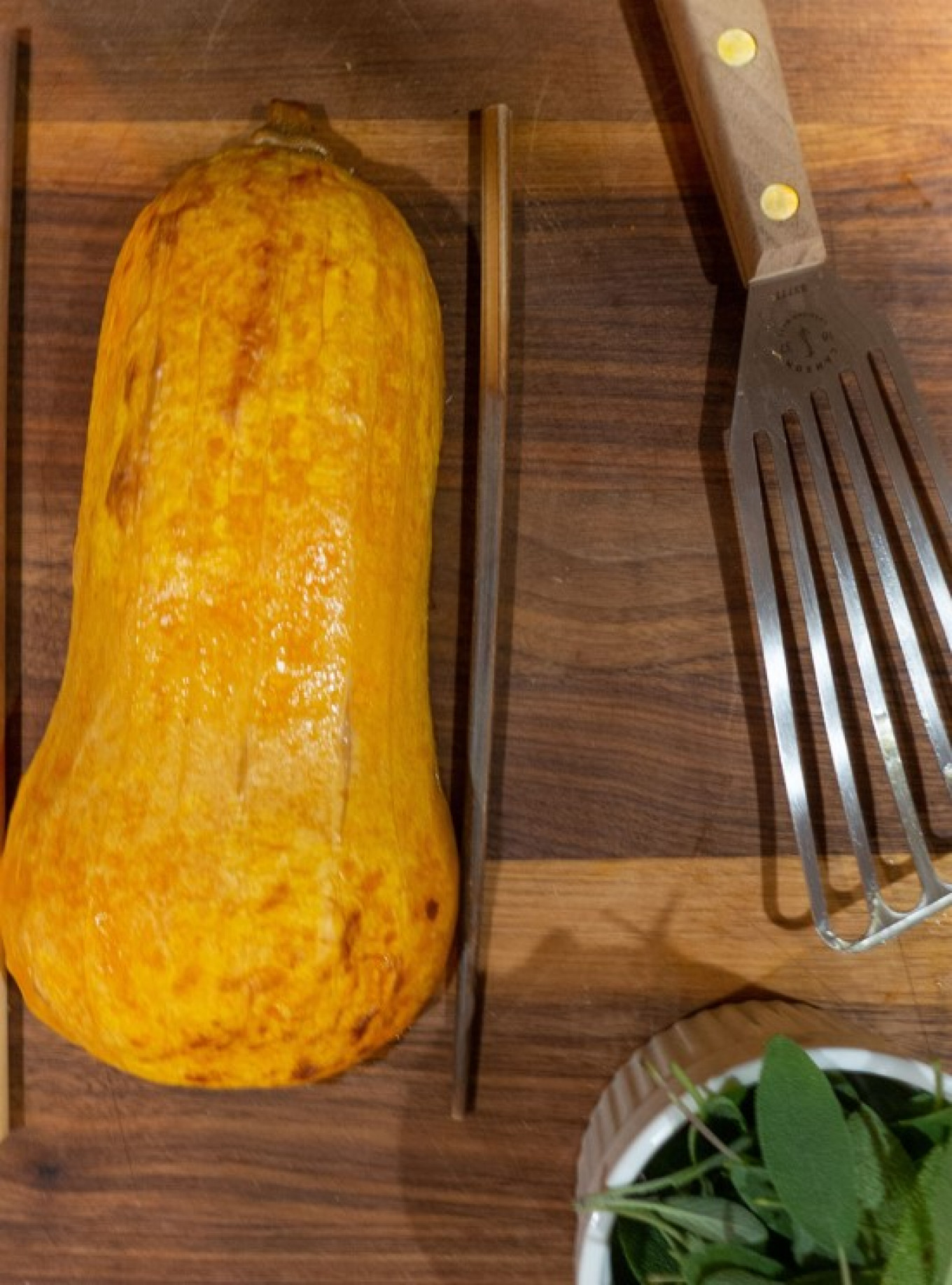
The actual hasselback-ing can be a fiddly business. Banish any panic about this: it’s lockdown, remember? No one is coming to dinner to witness your mistakes. Just use the sharpest knife in your arsenal, and by all means employ the popular hasselback hack of placing chopsticks on either side of the squash to act as guides when you are slicing down. Go slowly and carefully and, hey, if you mess up, simply pin it back together with a toothpick. As Julia Child would say, “Who’s to know?”
So, sharpen your best knife, preheat your oven to as high as it will go, and cut your non-working week into lots of thin layers with this delightfully creative culinary project. And stay safe!
Hasselback Butternut Squash with Honey Balsamic Glaze
Ingredients
- 2 medium-sized butternut squash
- 3 Tbsp olive oil
- 2 tsp flakey sea salt
- ½ tsp freshly ground black pepper
- ½ cup (125 ml) honey (the darker the better)
- ¼ cup (60 ml) white balsamic vinegar
- 6 Tbsp (75 grams) butter
- 1 tsp Aleppo pepper
- ½ tsp mace
- 1 tsp salt
- 2 bunches fresh sage leaves (about 24 leaves)
To plate and finish:
- 2 cups (475 ml) fresh arugula and more sage leaves
- 1 cup (200 grams) cubed salo or pancetta (optional)
- 1 tsp sumac
Preparation
- Preheat the oven to 425ºF (220ºC) and line a large baking sheet with parchment paper.
- Slice the squash in half lengthwise, spoon out the seeds from the hollow, and peel the outside skin. Brush the squash with the olive oil on both sides and sprinkle with sea salt and pepper.
- Place the squash on the prepared baking sheet, hollow side down. Roast for 8-10 minutes until the flesh is just pliant when pierced with a small sharp knife. Remove the squash set aside for 5-10 minutes until it is cool enough to handle. Leave the oven on.
- While the squash is cooling, combine the honey, vinegar, butter, Aleppo pepper, mace and salt in a small saucepan and bring to a gentle simmer. Stir the mixture as it simmers for 5-7 minutes until it thickens slightly. Set aside.
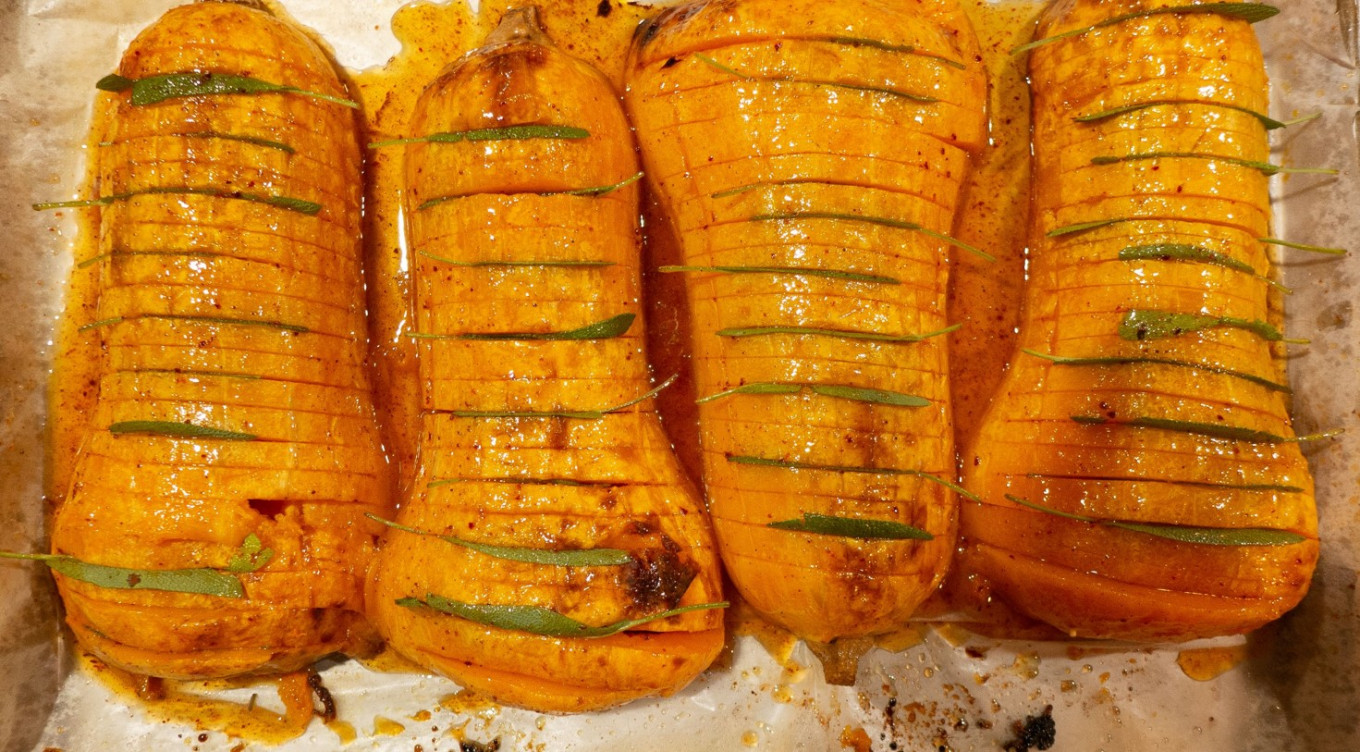
- Place the cooled squash on a cutting board, hollow side down. Make a series of parallel cuts along the horizontal plane that stop about ¼-inch (20 mm) from the bottom. This can be tricky: use a very sharp knife and if you are nervous about cutting through, place a pair of chopsticks on either side of the squash as guides. Cut down until the knife hits the chopstick.
- Insert the sage leaves between the hasselbacked layers. Brush the squash with the glaze and roast for 10 minutes. Remove from the oven and glaze again. Continue to cook and glaze at 10-minute intervals for 40 minutes.
- Arrange the squash on top of a bed of arugula on a serving platter. If using, scatter the pancetta or goat cheese around the platter and finish with a dusting of sumac.
Recipe inspired by Bon Appetit.

A Message from The Moscow Times:
Dear readers,
We are facing unprecedented challenges. Russia's Prosecutor General's Office has designated The Moscow Times as an "undesirable" organization, criminalizing our work and putting our staff at risk of prosecution. This follows our earlier unjust labeling as a "foreign agent."
These actions are direct attempts to silence independent journalism in Russia. The authorities claim our work "discredits the decisions of the Russian leadership." We see things differently: we strive to provide accurate, unbiased reporting on Russia.
We, the journalists of The Moscow Times, refuse to be silenced. But to continue our work, we need your help.
Your support, no matter how small, makes a world of difference. If you can, please support us monthly starting from just $2. It's quick to set up, and every contribution makes a significant impact.
By supporting The Moscow Times, you're defending open, independent journalism in the face of repression. Thank you for standing with us.
Remind me later.



